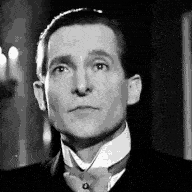0



















| Thumbs Up |
| Received: 34,729 Given: 61,129 |

[YOUTUBE]4uf9WJhvanU[/YOUTUBE]
Big Picture: Salute to the Canadian Army
This episode in the current THE BIG PICTURE series, filmed in Canada by U.S. Army Signal Corps cameramen, had its world premiere on October 28 at 9:30 P.M. over the coast-to-coast facilities of the Canadian Broadcasting Corporation.
The Canadian Forces Land Force Command (LFC), often called the Canadian Army, is responsible for army operations within the Canadian Forces. The current size of Land Force Command is 19,500 regular soldiers and 16,000 reserve soldiers, for a total of around 35,500 soldiers.
LFC maintains regular forces units at bases across Canada and is also responsible for the largest component of the Primary Reserve, the Army Reserve, which is often referred to informally by its historic name, the "militia". The Chief of the Land Staff is Lieutenant-General Peter Devlin.
LFC is the descendant of the Canadian Army which was the name of Canada's land forces from 1940 until February 1, 1968. At the time of unification all army units were placed under Mobile Command (MC), later changed to Force Mobile Command (FMC) in 1975 when tactical air units were assigned to newly-created Air Command. The name was changed from FMC to Land Force Command in a 1997 reorganization of the Canadian Forces.
Following unification of the three armed services in 1968, Mobile Command became in effect the "Canadian Army" though the term "army" did not find favour until the 1980s when it became once again unofficially used to refer to Canada's land forces, both Regular and Reserve. The early organization of Mobile Command included tactical ground attack fixed and rotary wing aircraft, in addition to ground forces, and was akin to the integrated warfare approach of the United States Marine Corps. In a 1975 reorganization of the Canadian Forces, Air Command was created and all air assets were reassigned to that organization. Mobile Command was renamed Force Mobile Command and became an exclusive ground force. In 1997, Force Mobile Command was officially redesignated Land Force Command of the Canadian Forces.
Canadian participation in the First World War began with the unusual step of scrapping all mobilization plans, and creating a field force from scratch.
In 1914, the Canadian Expeditionary Force (CEF) was created in response to a call by the United Kingdom for soldiers. The CEF was a separate entity from the Permanent Active Militia (by now also known as the Permanent Force, or PF) and the Non-Permanent Active Militia or NPAM. Regiments and other units of the Militia were not mobilized, but rather transferred personnel to the CEF for overseas employment. The CEF was disbanded after the war.
The Otter Committee reorganized the Canadian Militia in 1920, instituting a series of perpetuations so that both the pre-war Militia and the CEF had their traditions and histories integrated into the modern Canadian forces. The numbered pre-war regiments were all reorganized and redesignated; the archaic system of numbered regiments in the cavalry and infantry was dropped, with several exceptions such as 1st Hussars, the Royal 22e Régiment (originally the 22nd (Canadien-Français) Battalion, CEF), and the 48th Highlanders of Canada (48th Battalion (Highlanders)).
In 1936, the Non-Permanent Active Militia had six tank battalions created as part of the infantry, the first step towards modernization.
Canada's land forces underwent two major organizational changes between the world wars; in 1920 the pre-war regiments were all renamed, several organizational corps were created mirroring corps in the British Army, and new ones like the Canadian Machine Gun Corps or CMGC (not to be confused with the wartime corps of the same name) were created. The new regiments all perpetuated the history of the wartime CEF, and when battle honours were granted many years later, were permitted to adopt those battle honours.
In 1936, the CMGC was abolished and the Militia again underwent dramatic reorganizations, with three types of infantry regiments being created (rifle, machine gun, and tank). Many regiments were disbanded or amalgamated.
There are currently 1 users browsing this thread. (0 members and 1 guests)
Bookmarks